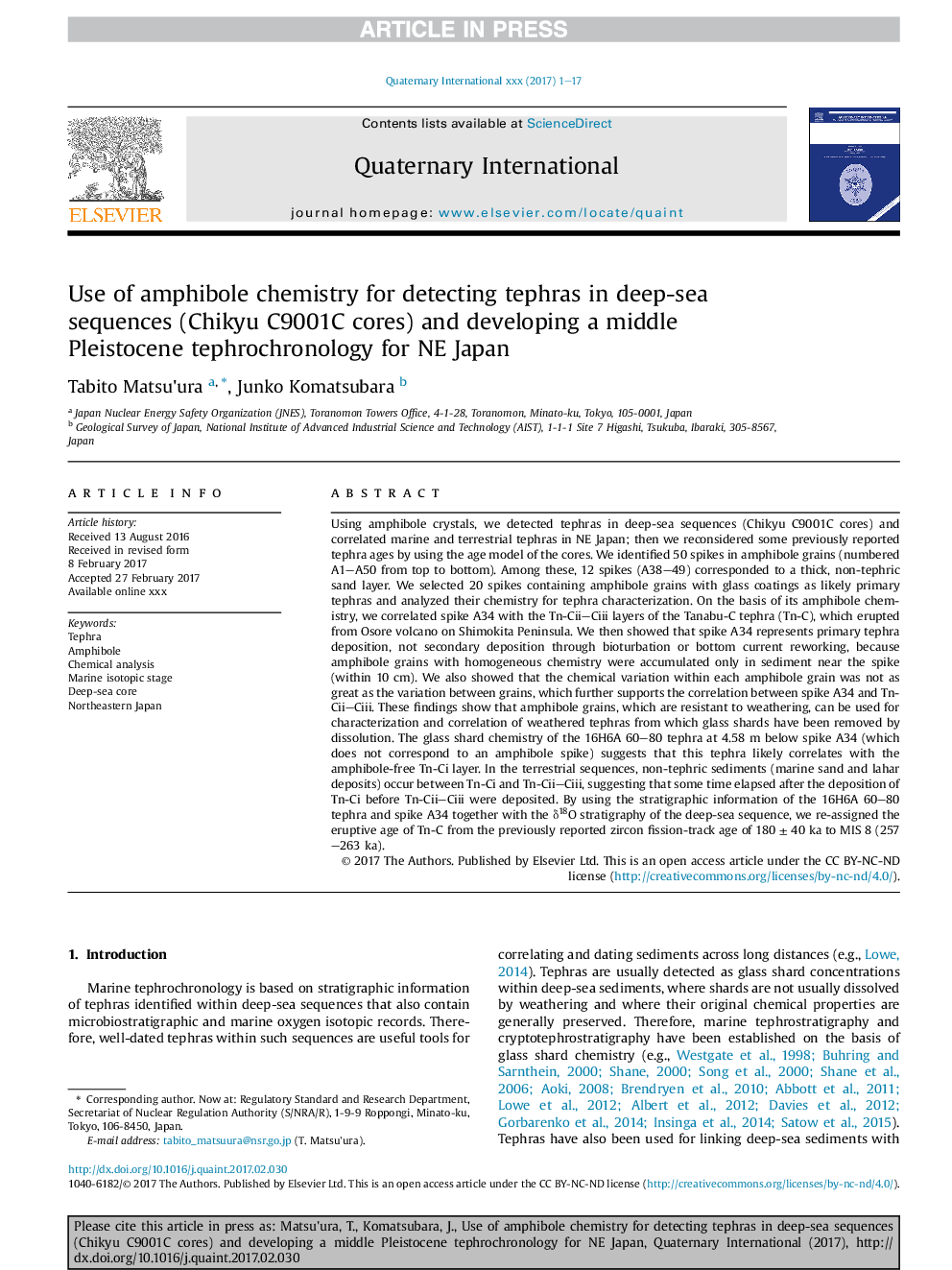| کد مقاله | کد نشریه | سال انتشار | مقاله انگلیسی | نسخه تمام متن |
|---|---|---|---|---|
| 7451307 | 1484067 | 2017 | 17 صفحه PDF | دانلود رایگان |
عنوان انگلیسی مقاله ISI
Use of amphibole chemistry for detecting tephras in deep-sea sequences (Chikyu C9001C cores) and developing a middle Pleistocene tephrochronology for NE Japan
دانلود مقاله + سفارش ترجمه
دانلود مقاله ISI انگلیسی
رایگان برای ایرانیان
کلمات کلیدی
موضوعات مرتبط
مهندسی و علوم پایه
علوم زمین و سیارات
زمین شناسی
پیش نمایش صفحه اول مقاله

چکیده انگلیسی
Using amphibole crystals, we detected tephras in deep-sea sequences (Chikyu C9001C cores) and correlated marine and terrestrial tephras in NE Japan; then we reconsidered some previously reported tephra ages by using the age model of the cores. We identified 50 spikes in amphibole grains (numbered A1-A50 from top to bottom). Among these, 12 spikes (A38-49) corresponded to a thick, non-tephric sand layer. We selected 20 spikes containing amphibole grains with glass coatings as likely primary tephras and analyzed their chemistry for tephra characterization. On the basis of its amphibole chemistry, we correlated spike A34 with the Tn-Cii-Ciii layers of the Tanabu-C tephra (Tn-C), which erupted from Osore volcano on Shimokita Peninsula. We then showed that spike A34 represents primary tephra deposition, not secondary deposition through bioturbation or bottom current reworking, because amphibole grains with homogeneous chemistry were accumulated only in sediment near the spike (within 10 cm). We also showed that the chemical variation within each amphibole grain was not as great as the variation between grains, which further supports the correlation between spike A34 and Tn-Cii-Ciii. These findings show that amphibole grains, which are resistant to weathering, can be used for characterization and correlation of weathered tephras from which glass shards have been removed by dissolution. The glass shard chemistry of the 16H6A 60-80 tephra at 4.58 m below spike A34 (which does not correspond to an amphibole spike) suggests that this tephra likely correlates with the amphibole-free Tn-Ci layer. In the terrestrial sequences, non-tephric sediments (marine sand and lahar deposits) occur between Tn-Ci and Tn-Cii-Ciii, suggesting that some time elapsed after the deposition of Tn-Ci before Tn-Cii-Ciii were deposited. By using the stratigraphic information of the 16H6A 60-80 tephra and spike A34 together with the δ18O stratigraphy of the deep-sea sequence, we re-assigned the eruptive age of Tn-C from the previously reported zircon fission-track age of 180 ± 40 ka to MIS 8 (257-263 ka).
ناشر
Database: Elsevier - ScienceDirect (ساینس دایرکت)
Journal: Quaternary International - Volume 456, 15 October 2017, Pages 163-179
Journal: Quaternary International - Volume 456, 15 October 2017, Pages 163-179
نویسندگان
Tabito Matsu'ura, Junko Komatsubara,